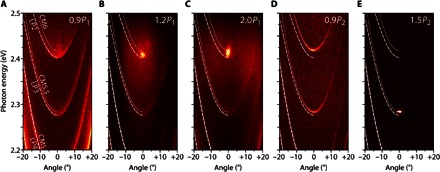Fig. 3. Excitation energy–dependent, angle-resolved luminescence spectra of low–water content eGFP-filled microcavity.

(A) Excitation below polariton lasing threshold (P = 0.9P1). Expected position of lower polariton branches LP2, LP3, and LP4 (white dashed lines) and cavity modes CM5, CM5.5, and CM6 (white dotted lines) are shown. Note that emission is present along the polariton branches and, to a lesser extent, blueshifted from the dispersion minimum of the LP2 branch. (B) At excitation energies above P1, a distinct peak (attributed to the polariton condensate) emerges at an emission angle of 0° and is blueshifted relative to the minimum of the LP2 dispersion. (C) At P = 2P1, the blueshift of the condensate peak has increased further. (D) Around P = 9P1 = 0.9P2, the emission into the LP modes disappears and the polariton peak collapses. Instead, emission from the uncoupled photon modes CMn occurs. (E) At P = 1.5P2, a sharp emission peak appears at 0° from the CM5.5 mode (attributed to photon lasing).
